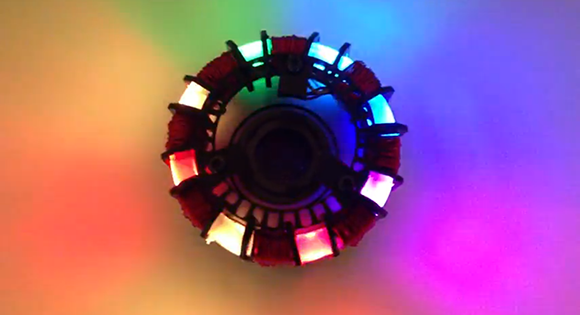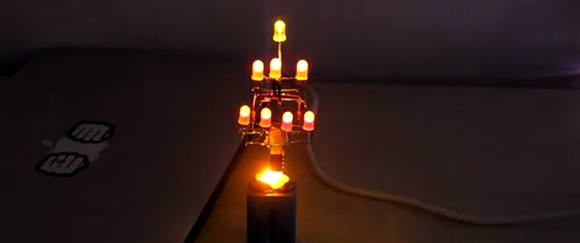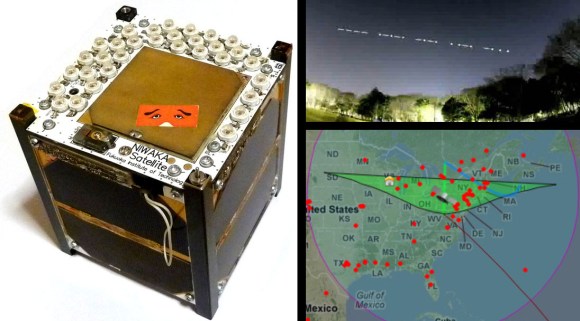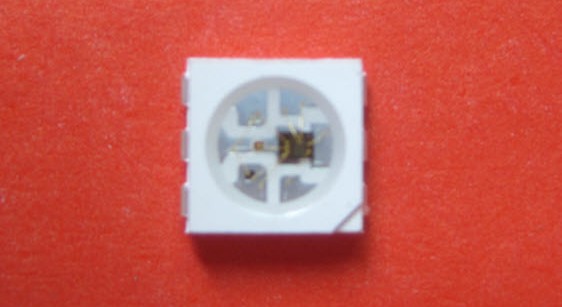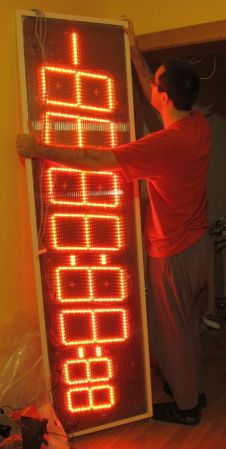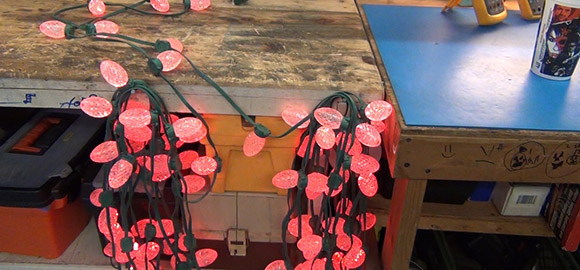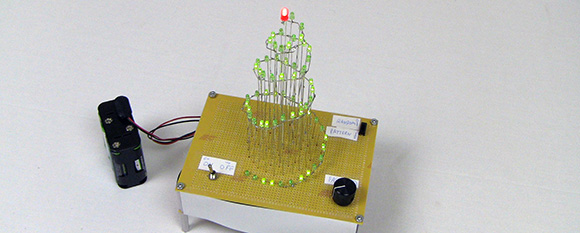
[Chris] over at PyroElectro is getting into the swing of the holidays with a LED Christmas tree build. Unlike the other electrical Christmas trees we’ve seen this holiday season, [Chris] designed his tree entirely with digital logic – no microcontrollers included.
The tree [Chris] constructed on a piece of perf board is a beautiful spiral arrangement of 64 green LEDs.While we’re sure getting all the LEDs soldered to the right height, [Chris] makes it look so easy to create 3D structures with circuits.
The LEDs are driven with a set of eight shift registers, themselves clocked by either a predictable 555 timer chip or a pseudo-random pattern generated with a circuit built from a few hex inverters. By setting the tree to the sequential mode, a pair of lights travel slowly down the spiral of the Christmas tree. If set to random mode, an random number of LEDs light up and walk down the array of LEDs.

